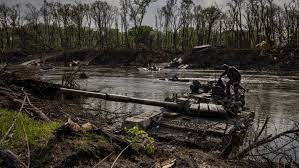The NATO standard Harpoon has a longer range, better targeting - and there are plenty of them. This is of concern to the Russian navy as it puts their entire Black Sea fleet at risk as well as its primary naval base at Sebastopol in Crimea. The provision of the Harpoon to Ukraine suggests that the west is now preparing to end the Russian naval blockade which has impacted global grain supplies and contributed to inflation. JL
Peter Suciu reports in 19fortyfive:
The all-weather, over-the-horizon, Harpoon was developed by Boeing Defense, Space & Security and it utilizes active radar homing to fly just above the water and evade defenses. The RGM-84L-4 Harpoon Block II are capable of hitting targets in port and on land with an upgrade.The Harpoon anti-ship missiles could threaten the logistics hub for the Black Sea Fleet in Sevastopol, which would make it more difficult for Russia to rearm after missile strikes on land targets in Ukraine.




























































